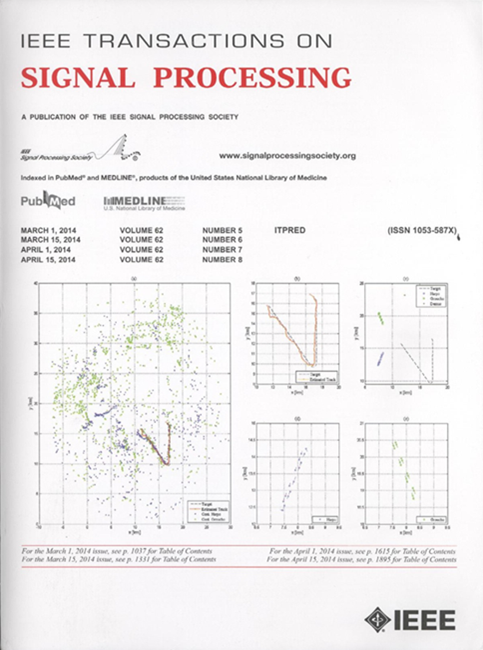Collaborative Trajectory Optimization for Multitarget Tracking in Airborne Radar Network With Missing Data
IF 4.6
2区 工程技术
Q1 ENGINEERING, ELECTRICAL & ELECTRONIC
引用次数: 0
Abstract
In this paper, an effective collaborative trajectory optimization (CTO) strategy is proposed for multitarget tracking in airborne radar networks with missing data. Missing data may occur during data exchange between radar nodes and a fusion center (FC) due to unreliability of communication channels. The CTO strategy aims to enhance the overall multi-target tracking performance by collaboratively optimizing the trajectories of airborne radars and the FC. In this paper, we derive the posterior Cramér-Rao lower bound (PCRLB) with missing data to evaluate the target tracking performance. On this basis, to maximize the target tracking performance while considering dynamics, collision avoidance, and communication distance constraints, we formulate the CTO optimization problem. The formulated problem is non-convex and internally coupled, which is challenging to solve directly. We decompose the CTO problem into two subproblems and devise an alternating optimization method. Specifically, approximation, and successive convex approximation are applied to make the subproblems solvable. Then, the two subproblems are solved alternately to realize the collaborative trajectory optimization of radars and the FC. Simulation results demonstrate that the proposed CTO strategy achieves better target tracking performance as compared with other benchmark strategies.缺失数据下机载雷达网络多目标跟踪协同轨迹优化
针对机载雷达网络中存在数据缺失的情况,提出了一种有效的协同轨迹优化(CTO)策略。由于通信信道不可靠,雷达节点与FC (fusion center)之间的数据交换可能会出现数据丢失。CTO战略旨在通过协同优化机载雷达和FC的轨迹来提高整体多目标跟踪性能。在本文中,我们推导了缺失数据的后向cramsamr - rao下界(PCRLB)来评估目标跟踪性能。在此基础上,为了在考虑动力学、避碰和通信距离约束的情况下使目标跟踪性能最大化,我们制定了CTO优化问题。该公式问题是非凸的、内耦合的,直接求解具有一定的挑战性。我们将CTO问题分解为两个子问题,并设计了一种交替优化方法。具体地说,应用逼近和连续凸逼近使子问题可解。然后,交替求解这两个子问题,实现雷达与FC的协同轨迹优化。仿真结果表明,与其他基准策略相比,所提出的CTO策略具有更好的目标跟踪性能。
本文章由计算机程序翻译,如有差异,请以英文原文为准。
求助全文
约1分钟内获得全文
求助全文
来源期刊

IEEE Transactions on Signal Processing
工程技术-工程:电子与电气
CiteScore
11.20
自引率
9.30%
发文量
310
审稿时长
3.0 months
期刊介绍:
The IEEE Transactions on Signal Processing covers novel theory, algorithms, performance analyses and applications of techniques for the processing, understanding, learning, retrieval, mining, and extraction of information from signals. The term “signal” includes, among others, audio, video, speech, image, communication, geophysical, sonar, radar, medical and musical signals. Examples of topics of interest include, but are not limited to, information processing and the theory and application of filtering, coding, transmitting, estimating, detecting, analyzing, recognizing, synthesizing, recording, and reproducing signals.
 求助内容:
求助内容: 应助结果提醒方式:
应助结果提醒方式:


